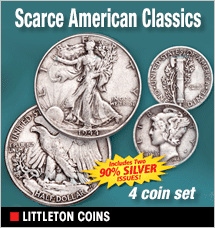Silver Screen, Golden Years
Grace Kelly, Studio One, and Live TV

 Grace Kelly, before she became a star in Hollywood, was part of the new vanguard of actors, including Paul Newman, Anthony Perkins, James Dean, Lee Remick, Charles Bronson, who learned their trade on live (yes, that’s live) television before they went into films. Studio One, an anthology series where each episode was a different story, was only one of the groundbreaking new outlets for young talent. Other shows included Conflict, Climax, Playhouse 90, Robert Montgomery Presents, and a host of other shows, many produced in New York City at the time.
Grace Kelly, before she became a star in Hollywood, was part of the new vanguard of actors, including Paul Newman, Anthony Perkins, James Dean, Lee Remick, Charles Bronson, who learned their trade on live (yes, that’s live) television before they went into films. Studio One, an anthology series where each episode was a different story, was only one of the groundbreaking new outlets for young talent. Other shows included Conflict, Climax, Playhouse 90, Robert Montgomery Presents, and a host of other shows, many produced in New York City at the time.
New York was the home of live television just as it had been the driving force of the theater world. TV shows in those early days of the 1950s were more like theater than what they would later become when videotape and canned laughter were invented. Some famous films had their start as single episodes of some of these television shows. Conversely, many early TV shows dramatized versions of old films. In an unusual twist, Grace Kelly’s 1956 film The Swan originated on live television as an episode of the show The Actor’s Studio in 1950, starring…Grace Kelly. The episode was a version of the film One Romantic Night (1930) starring Lillian Gish — based on the Ferenc Molnár play, The Swan!
Many of these shows have been lost; many were simply broadcast once and never recorded, but two Studio One episodes called “The Rockingham Tea Set” and “The Kill” were preserved on Kinescope. They both star a young Grace Kelly. Few early shows were actually shot on film. Compare the quality of any episode you might have seen of I Love Lucy, which was shot on film and therefore is preserved in excellent quality, and any of the shows from the 1970s which were filmed on videotape. The ones from the 1970s are, in comparison, fading in quality. (Though some series are now being digitally preserved on DVD.)
I never “discovered” old movies. They were always on in my home and I watched them from earliest memory. Classic television, however (if we may use the term), was something I had to “discover,” as by the time I was growing up, old movies were being shown on television, but TV was conspicuously ignoring its own separate heritage.
The two Studio One episodes with Grace Kelly capture the excitement of live TV, in that they are very theatrical in nature (in some aspects, rather bumbling, like low-budget community theater). There were, quite obviously, severe technical limits on what the shows were able to do in their small studios. Sets were simple. There was usually only a two-camera setup. Close-ups were often accomplished not by zooming in on an actor, but by the actor simply stepping closer towards the stationary camera.
In “The Rockingham Tea Set,” Grace Kelly plays a nurse hired to care for a wealthy young invalid. She walks a tightrope navigating the moods of the manipulative and emotionally disturbed patient. In “The Kill,” she plays the wife of a man hunted like a dog by his neighbors. Both simple plots, simple dialogue, but dramatic and fun to watch for what television was able to do at the time and even for what it wasn’t able to do, and especially for the sublime pleasure to see Grace Kelly at 20 years old.
It has been noted by various biographers that during the shooting of her 1955 film To Catch a Thief, co-star Cary Grant was awed by Grace Kelly’s ability to deftly improvise a scene. She explained to him it was because of her early training in live television.
By the way, the original commercials for Westinghouse home appliances presented by Betty Furness are still included in the Studio One episodes, and they are as much fun as watching the episodes.
My hope is that Turner Classic Movies or other nostalgia channels show more of these live anthology shows from the 1950s which showcase that particular generation of actors who cut their teeth on them and later came to have important careers in film. We have little other access to these shows, except for museum and university archives which are not easily available to most people. It’d be nice to be able to stay home and watch them — on television.
Jacqueline T. Lynch is the author of Ann Blyth: Actress. Singer. Star. and Movies in Our Time: Hollywood Mirrors and Mimics the Twentieth Century, available online at Amazon, CreateSpace, and the author. Website: www.JacquelineTLynch.com.



























































